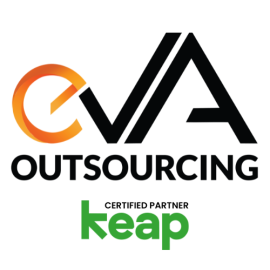Having the right systems is essential for success, but nurturing your business and team ensures lasting growth. This tip will enable you to have an efficient VA-employer process.
If you haven’t read the first two tips, click here to read. If you already did, this is the 3rd tip to ensure a successful project with your VA.
3. COMMUNICATING VIRTUALLY
Without the benefit of body language that comes from speaking to someone who is physically in the room, many of us find it hard to build and maintain a strong working relationship. The secret is to establish effective communication channels and use them frequently.

It’s important from the onset to discuss with your VA which mode of communications works best for both of you–whether it’s by phone, email, Skype, text messages, or through your project management system.
Keep in mind that others can do some of your tasks just as well as you can, and in some instances, maybe even better. VAs bring to the table the experience they have gained working with other clients and often can suggest new, more efficient, methods for doing things. The trick is to nurture an open relationship in which our VA feels confident enough to share their knowledge. Also, make sure you let your VA know how often you expect them to check in and update you.

It is also encouraged to limit communications to normal business hours. You both deserve a private life and this should be mutually respected.
Make time for each other. It’s a good rule of thumb to check in with your VA at least once weekly ‘in person’ via Skype or phone. Set a meeting for the same time every week and stick to it!
Find the online tools to help you best communicate: A combination of Teamwork, Basecamp, and Google docs when dealing with VAs and clients’ VAs, but the web offers many tools that can be used to help you get the most out of your virtual relationship. For sharing passwords securely you can use Lastpass. Plus, you can revoke access asap if the relationship goes sour.

WHAT TO DO IF IT DOESN’T WORK OUT?
No matter how well you prepare and vet candidates beforehand, sometimes it’s just not a good fit. Don’t forget that you are paying them to do their job to the best of their ability and to deliver on time.
If you find that this is not happening, don’t wait too long to terminate the engagement. You can give an outsourced service provider three chances. Discuss with them the issues you’re displeased with, ask them for their solution and if after three conversations there is no improvement, you can discontinue working with them.
Also, don’t let one negative experience with a VA prevent you from trying again. Like all our business activities, we don’t always get it right the first time. The main thing is to learn from our mistakes.
So when do you know?
If you find it hard to work with a VA, it’s probably not the right person for you. A good VA/employer relationship shouldn’t take tons of hand-holding and should always make your life easier, not more difficult.
As part of our 2021 eVAnniversary promo, we are offering up to 60% off in your first month with us! Avail of this discount today or refer us to someone you know who might need a VA. Limited slots only.
Ready to Boost Your Productivity?
Discover how our expert virtual assistants can streamline your tasks and help your business thrive. Get in touch with us today to learn more about our flexible services and tailored solutions.
Contact us now or Book a free discovery call to see how we can support your business goals!




I did a lot of research on a topic I was looking for. But the most accurate information is on this site. Congratulations on a great blog.
I remember when I first started working with a virtual assistant, finding the right mode of communication was a bit of trial and error. Eventually, we settled on a combination of Slack and Trello, which worked wonders for us. It’s true, open communication is key to a successful collaboration, and setting up regular check-ins is a game-changer in ensuring everyone stays on the same page.
When I first started working with a VA, I struggled with finding the right communication channels. We eventually settled on a combination of Slack and Google Docs, which made a world of difference. Setting regular check-ins also helped build trust and keep us aligned. It’s reassuring to know that others have faced similar challenges and found solutions.